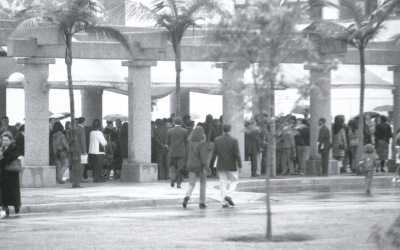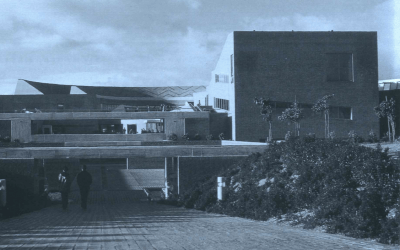State Collapse and Early Response
Agenda for Peace
In 1992 Boutros Boutros Gali launched his widely known Agenda for Peace. This coincided with the beginning of a change in the United Nations tending to widen its scope of action to confront the internal conflicts that multiplied in the world after the end of the “bi-polar order”. In his Agenda, the United Nations Secretary General pointed out that the cohesion of states was being brutally threatened by ethnic, religious, social, cultural or linguistic disputes. As an answer he stated the need for preventive diplomacy to “avoid that the existing disputes escalate into conflicts and in case these take place, limit their expansion”. And he added that preventive diplomacy could only be built if there is a “recognized web of early alarm systems.” As an answer to this request by the United Nations, several working groups began to come up with a series of dependable indicators to detect when a state is at eminent risk of collapsing. The idea was to build “early alarm” warning systems to transfer international community resources to impede these disastrous episodes of state collapse.
The most important groups working in this sense, were: the Conflict Early Warning Systems (CEWS) an investigative project sponsored by the International Council of Social Sciences (ISSC); two non-governmental agencies located in London: International Alert and The Forum on Early Warning and Early Response (FEWER). Additionally, in 1994 the then U. S. Vice President Al Gore, constituted a working group with the same perspective, called the “State Failure Project”.
Baker and Ausink (1996), for example, detected nine common traits in three nations (Somalia, Sierra Leona and Sudan) in which the state was on the brink of collapse or totally collapsed: a strong demographic pressure, a massive refugee movement, economic growth linked to ethnic division, a long tradition of vengeance and repression, a profound de-legitimization of the state, severe economic crisis, progressive deterioration or elimination of public services, manifest incapacity to implement legal norms, and different freelance security operatives acting as “states within the state”.
This is an excerpt from Pauline Baker and John Ausink‘s “State Collapse and Ethnic Violence: Toward a predictive model”, Parameters US Army War College Quarterly, V. XXVI.
Colapso estatal y reacción rápido
Agenda para la Paz
En 1992, Boutros Boutros Gali lanzó su conocida Agenda para la Paz. Esta coincidió con el comienzo de un viraje de las Naciones Unidas tendiente a ampliar sus funciones para afrontar los conflictos internos que se multiplicaban en el mundo tras el fin del “orden bipolar”. En su Agenda, el Secretario General de Naciones Unidas señalaba que “la cohesión de los Estados está siendo brutalmente amenazada por disputas étnicas, religiosas, sociales, culturales o lingüísticas”. Como respuesta, planteaba la necesidad de una diplomacia preventiva tendiente a “impedir que las disputas existentes escalen hacia conflictos y, en el caso de que éstos tengan lugar, limitar su expansión”. Y, añadía, que una diplomacia preventiva solamente se puede construir si existe un “reconocida red de sistemas de alarma temprana”.
Como respuesta a esta solicitud de Naciones Unidas, surgieron distintos grupos de trabajo orientados a construir una serie de indicadores fiables para detectar cuándo un Estado se encuentra en riesgo inminente de colapsar. Se buscaba, ante todo, construir instrumentos de “alarma temprana” para movilizar recursos de la comunidad internacional con objeto de impedir que se siguieran extendiendo estos desgarradores episodios de derrumbe estatal. Los grupos más importantes que trabajaron en este sentido fueron: el Conflict Early Warning Systems (CEWS), un proyecto investigativo del Consejo Internacional de Ciencias Sociales (ISSC); dos organizaciones no gubernamentales con sede en Londres: International Alert y el Forum on Early Warning and Early Response (FEWER); adicionalmente, en 1994, siendo vicepresidente de los Estados Unidos, Al Gore, constituyó un equipo de trabajo con la misma perspectiva denominado el State Failure Project.
Baker y Ausink (1996), por ejemplo, detectaron nueve rasgos en común en tres naciones (Somalia, Sierra Leona y Sudán) en las cuales el Estado estuvo al borde del colapso o sufrió un derrumbe total: una fuerte presión demográfica, un movimiento masivo de refugiados, un crecimiento económico ligado a segmentaciones étnicas, una larga tradición de venganzas y represalias, una honda deslegitimación del Estado, una severa crisis económica, un progresivo deterioro o eliminación de los servicios públicos, una incapacidad manifiesta para implementar las normas legales y, por último, unos aparatos de seguridad operando como una suerte de “estados dentro del estado”.
This is an excerpt from Pauline Baker and John Ausink‘s “State Collapse and Ethnic Violence: Toward a predictive model”, Parameters US Army War College Quarterly, V. XXVI.
Related Articles
On the Verge of Combustion
An exceptional narrative renewal is taking place in Colombia. And yet, there is neither a dazzling figure who has captured the hearts of million of readers in the continent, as Jorge Isaac, José Eustasio…
Colombian Immigration
A walk along Roosevelt Avenue in Jackson Heights, Queens, reveals the world of Little Colombia: neighborhood streets lined with small bakeries; the smell of fresh bread and arepas blend with the sounds of cumbia, the national musical style.
Bogotá Libraries
Last year, 9-year-old Jonathan Huertas and his three younger siblings spent their vacation indoors watching television—their mother was too afraid to let them play in the streets …




